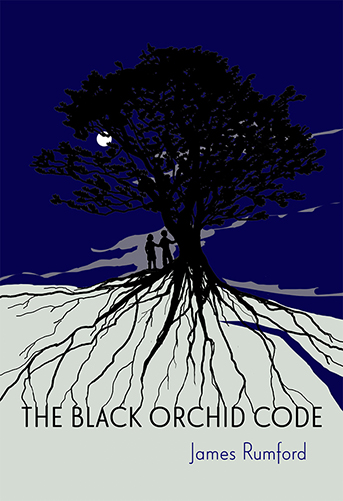What do plants think?

To purchase a copy of The Black Orchid Code (either paperback or Kindle), click here.
FROM THE PAPERBACK COVER:
Jake Ford, an average fifth grader, buys a software package called X-Crypt that promises to decode any message. The software, of course, is bogus, but, unknown to its makers or to Jake at first, it will allow him to tap into the world of plants and find out what they are saying. What he discovers will lead him and Ems—the girl next door—on a quest to change the world before the black orchid blooms and it is too late. Although pure science fiction, The Black Orchid Code, written in 2014, feels as if we are reading today’s news. Although not about the Covid-19 pandemic, the book warns of a similar threat. It talks of the dire consequences of doing nothing when faced with unspeakable danger, of wrapping the truth in lies, and of denying reality. Jake Ford and Ems may just be children, but they represent us all as we battle Covid-19 and prepare for the changes it must bring.
HOW I CAME TO WRITE THIS BOOK: This book began with three questions. What if plants had a language? What if we could decode that language? What if we found out that the plants were planning on getting rid of us because we had outlived our usefulness and were destroying the earth instead of caring for it?
I don’t know when I began to ask myself these questions and to answer them, but ten or more years ago, I came up with the story outline of a boy who accidentally discovers that the computer software he had bought can translate what plants are saying into human talk. The idea seemed fun, and I shared it with my mentor, Harriett Oberhaus, who immediately loved it. We spent the afternoon thinking of all kinds of plot points. We even came up with the main characters and the locale: Long Beach, California, where I grew up and where there was a park, and old pine tree, and the streets I knew so well. My notebook was filled with ideas.
But actually sitting down to turn these ideas into a book didn’t seem fun but hard work. So, the years passed until December 2013, when I stumbled across a half-written first chapter. As I began to rewrite the chapter, I could see the other chapters in my mind and in no time I had a first draft of the entire book.
I have always loved languages and this book fits right in with this passion. In fact, I remember a Reader’s Digest article back in the 60s about plant communication and plant feelings. As a teenager, this seem as fantastic as it was intriguing. Perhaps I wondered then what it would be like to communicate with a plant, that is, have a real conversation with it. And thus it was in the 1960s that the real germ of The Black Orchid Code began to take root.
In October 2020, I decided to turn The Black Orchid Code into a e-publication. In doing so, I had to reformat the entire book. As I reread what I had written over six years ago, I saw how relevant this book has become. The Covid-19 pandemic has raised the same questions raised in the book. How should we react to an impending disaster? Should we accept the task set before us or should we deny that any problem exists? What role does truth play and what is the meaning of truth? What role do the media play? And finally, how do we deal with disaster when it comes? The Black Orchid Code cannot answer these questions. It can only present how an eleven year-old boy and his friend Ems react when faced with such perilous questions. Truth, Jake Ford finds out is "just the truth." Such a meaningless statement might be lost on us, but to Jake it fills his universe with a tautological argument that embraces everything. Suddenly, he realizes that there is no escaping reality.
